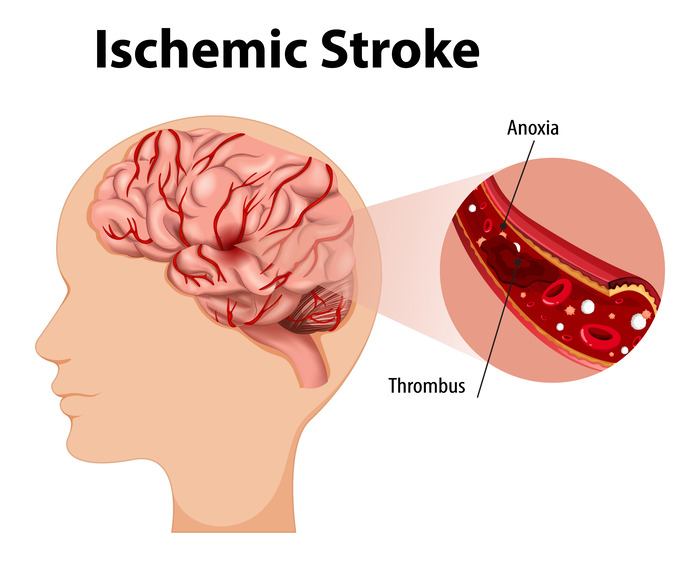Strokes can strike anyone, anywhere, at any time—and the risks can increase under certain conditions, especially in the heat of summer. From dehydration to alcohol consumption and skipped medications, warm-weather habits can unknowingly raise stroke risk. Understanding the symptoms, acting fast, and maintaining healthy lifestyle practices can greatly reduce your risk and improve outcomes if a stroke does occur.
Let’s explore expert-backed stroke prevention and treatment tips, so you can protect yourself and your loved ones.

What Is a Stroke?
A stroke happens when blood flow to a part of the brain is blocked or a blood vessel in the brain bursts. Without oxygen-rich blood, brain cells begin to die in minutes, causing possible long-term brain damage, disability, or death.
There are two major types of stroke:
-
Ischemic stroke: Caused by a blood clot blocking an artery in the brain.
-
Hemorrhagic stroke: Caused by a blood vessel rupturing in the brain.
Time is critical in treating both.
Recognizing the Symptoms of Stroke
Recognizing stroke symptoms early can save lives. Immediate treatment is vital to prevent permanent brain damage.
Common Stroke Symptoms:
-
Sudden numbness or weakness in the face, arm, or leg—especially on one side
-
Sudden confusion or difficulty speaking
-
Trouble seeing in one or both eyes
-
Dizziness, loss of balance, or difficulty walking
-
A sudden, severe headache with no known cause
The FAST Method:
Use the acronym FAST to remember the warning signs:
-
Face drooping
-
Arm weakness
-
Speech difficulty
-
Time to call 911
“Many people dismiss early symptoms, assuming it’s just fatigue or temporary numbness,” warns Brandy Magee, MSN, APRN, FNP-C. “This can lead to devastating consequences. Don’t hesitate—seek emergency care immediately.”
Why Summer Can Increase Stroke Risk
Warmer temperatures often bring lifestyle changes—many of which can inadvertently heighten stroke risk.
Common Summer Triggers:
-
Dehydration: Loss of fluids thickens blood, making clots more likely.
-
Alcohol and Salt: More barbecues mean more alcohol and salty snacks, both of which raise blood pressure.
-
Heat Exposure: Heat stress can elevate heart rate and lower hydration levels.
Alcohol and Stroke Symptoms:
Alcohol can mask stroke symptoms, making it harder to detect warning signs. Because stroke symptoms—slurred speech, dizziness—can mimic intoxication, people may dismiss a serious situation.
Importance of Immediate Stroke Treatment
Delays in stroke treatment can be deadly. In fact, for every second a stroke goes untreated, nearly 32,000 brain cells die. Quick response is essential.
What to Do:
-
Call 911 immediately—do not drive to the hospital.
-
EMS teams can begin treatment on the way and alert hospital staff in advance.
-
Do not wait to “see if it passes.” Time equals brain health.
Clot-busting drugs must be administered within 3 to 4.5 hours of symptom onset for maximum effectiveness.
Preventing Stroke: Lifestyle and Medication Tips
While not all strokes can be prevented, many are linked to controllable risk factors. Here’s what you can do:
1. Manage Diet and Hydration
-
Limit sodium intake to under 2,300 mg/day.
-
Eat complex carbs and avoid excess sugar.
-
Drink plenty of water—especially in hot weather.
Dr. Multani highlights the role of diet in stroke risk: “Diabetics are twice as likely to have a stroke. Managing blood sugar is essential.”
2. Avoid Excessive Alcohol
-
Alcohol raises blood pressure and interferes with medications.
-
Drink in moderation and stay alert to stroke symptoms.
3. Take Medications as Prescribed
-
Always have enough medication when traveling.
-
Don’t skip doses of blood thinners like Coumadin, cholesterol-lowering drugs, or antihypertensives.
“Missing even one dose of Coumadin can significantly elevate stroke risk,” notes Dr. Multani.
4. Attend Follow-Up Appointments
Post-stroke or post-TIA patients must follow up with their healthcare providers, including neurologists and cardiologists, to prevent recurrent strokes.
How to Lower Your Risk of Stroke
-
Recognize and respond quickly to stroke symptoms using FAST.
-
Stay hydrated and limit high-sodium foods and alcohol, especially in the summer.
-
Take medications regularly, especially on vacations or outdoor events.
-
Attend all follow-up appointments with your healthcare team.
FAQs:
Q1. What is the fastest way to recognize a stroke?
Use the FAST method: Face drooping, Arm weakness, Speech issues, and Time to call 911. Early recognition is crucial.
Q2. Why is summer considered a high-risk season for strokes?
Heat, dehydration, and increased alcohol/sodium intake during summer events can elevate stroke risk.
Q3. Can missing one dose of medication cause a stroke?
Yes. Medications like blood thinners (e.g., Coumadin) and blood pressure drugs are critical. Even one missed dose can be risky.
Q4. Is a stroke always painful?
No. Many strokes are painless and only present as weakness, confusion, or numbness, which is why symptoms are often ignored.
Q5. Can alcohol mask stroke symptoms?
Yes. Slurred speech or poor balance from alcohol can mimic stroke symptoms, causing delays in seeking help.




